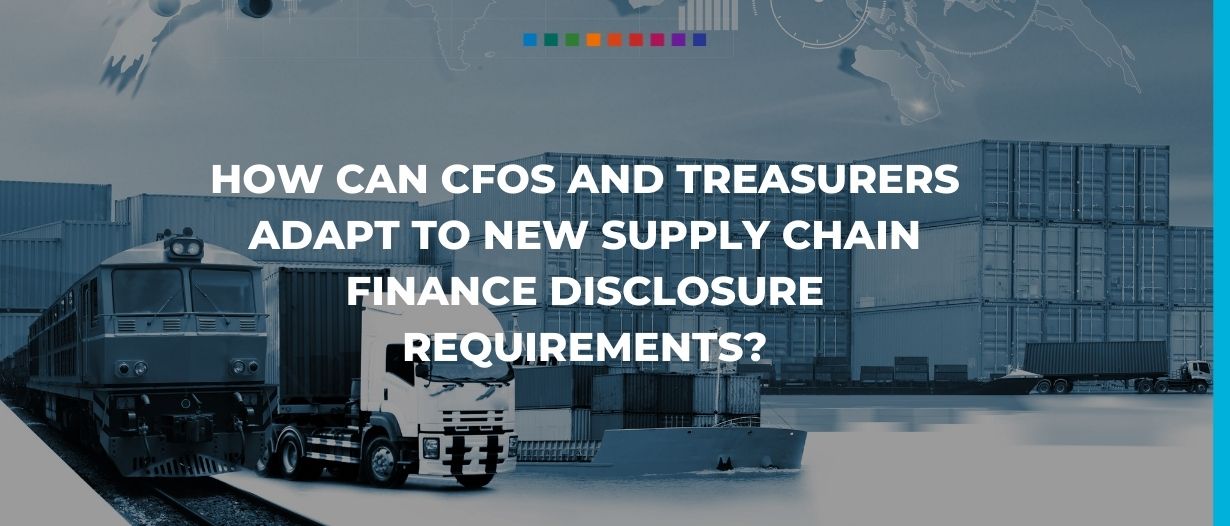Supply chains have faced incredible stress and scrutiny over the past year and a half. From semiconductor chips to the Suez Canal, global trade has never been in the spotlight so much. And, in the wake of high-profile financial failures, it is no wonder the industry is undergoing regulatory change.
Steven Lauricella explains the five things CFOs and Treasurers need to know about the new regulations, and how alternative solutions can be harnessed to fund crucial supply chain initiatives.
As part of the changes, the International Accounting Standards Board, Financing Accounting Standards Board and the UK-based rating agency Fitch, amongst others, will require companies to publicly disclose the size and scope of their SCF programs.
At the core, demands for increased disclosure about Supply Chain Finance (SCF) programs call for more clarity and transparency.
This is a good thing. But, the new disclosure requirements will have far-reaching consequences for SCF programs that have been instrumental to buyers and suppliers for decades.
What should CFOs and treasury leaders know?
1. New regulations will force you to change how you fund SCF programs.
2. Your promise-to-pay obligations risk being reclassified as debt.
3. Consequences include loss of working capital, increased borrowing costs, supply chain disruption and higher compliance costs.
4. There are alternative models to maintain the essential benefits of SCF while eliminating the “Promise to Pay”.
5. The new disclosure requirements will force companies using SCF programs to make tough choices: reduce programs, eliminate the “promise to pay”, accelerate payments or take on debt.
These options have hard consequences – with implications on innovation, growth, financial performance and more. Consider the outcomes:
- If you accelerate payments or reduce SCF programs: the loss of working capital will affect day-to-day operations – R+D investment, customer acquisition, market expansion, valuation and more.
- If your SCF program gets reclassified as debt: your ability to raise money, secure favourable interest rates, meet contractual obligations and maintain high credit ratings will be hampered.
- Your supply chain stability and resilience will take a hit: suppliers and supply continuity will be constrained.
- Your operational and compliance costs will rise: tracking, management, and reporting will require additional administrative work.

What’s the alternative?
There is a better way to finance supply chain programs: eliminate the promise to pay that you give for an invoice funded by SCF.
What supply chain partners really need is clear:
- buyers – need an efficient, quick, and simple way to pay suppliers and invest that doesn’t require obligations to financial institutions
- suppliers – need a simple way to get paid sooner.
The solution lies in machine learning-enabled technologies that eliminate the need for “Promise to Pay”.
Machine learning technology analyses corporates’ ERP data to predict the few invoices which are unlikely to get paid. The rest can then be paid instantly by a funder, such as a bank. The buyer then pays the funder back on its normal payment terms.
This delivers what SCF promised: buyers support suppliers with access to cost-effective early payments without creating new financial obligations.
The result is easy, seamless payments that lower risk for all parties, optimise margins and strengthen supply chains.
Forward-looking finance leaders are not waiting for the regulatory agencies to hammer out SCF disclosure requirements. They are acting now to put their organisations and supply partners in a better position, financially and operationally.
To adapt to the incoming regulatory changes, CFOs and treasures should look beyond traditional methods of financing supply chain programs. By shifting the focus away from lending and towards modern AI-driven solutions, businesses can eliminate the costs and headaches that come with borrowing and build stronger supplier relationships.
Technology is ready to change the face of supply chain financing. To stay ahead of the curve, the time to start future-proofing your business is now.






























